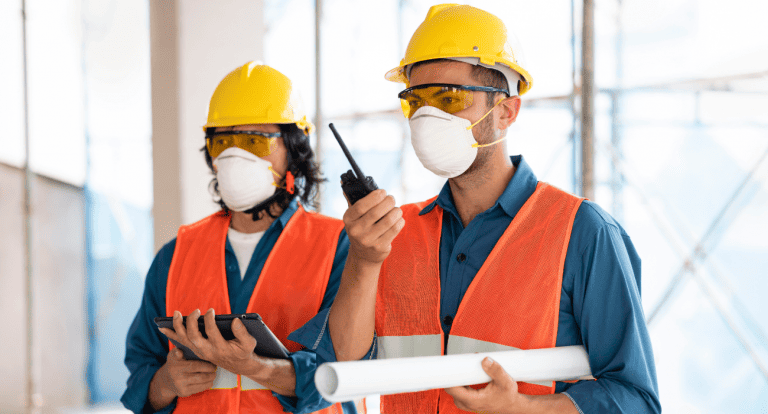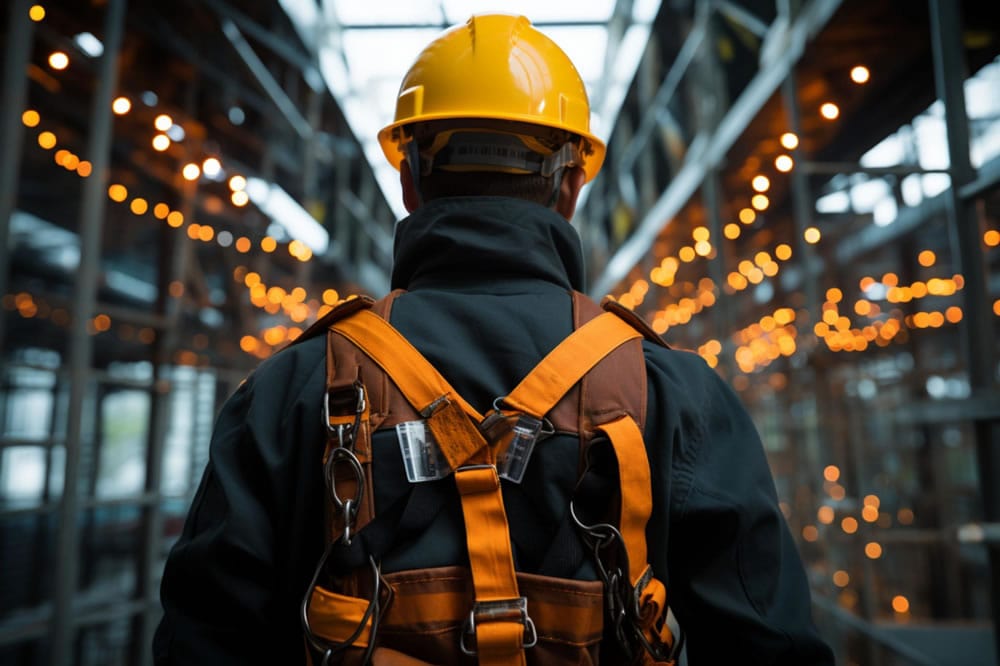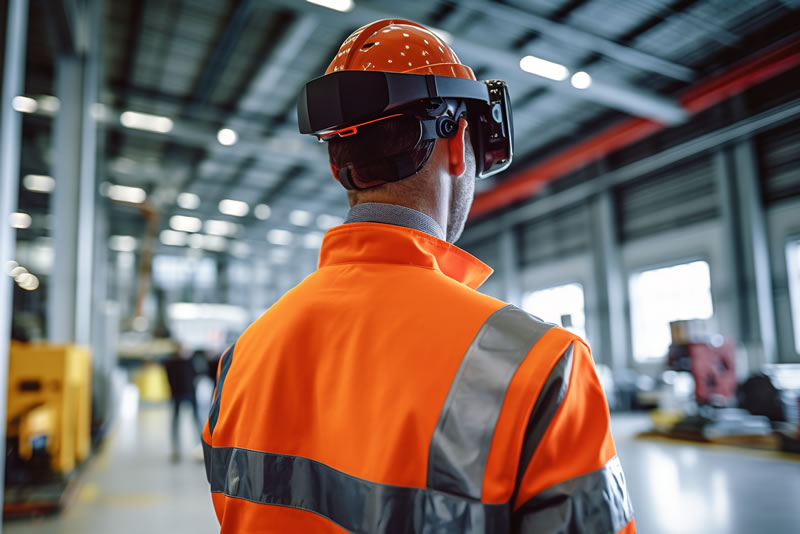In the construction industry, health and safety on construction sites should always take precedence. Due to the inherent risks involved and in some cases inadequate health and safety management practices, the construction sector witnesses the highest incidence of non-fatal accidents globally.
Hence, stringent safety regulations are imperative. Regulations such as the Construction Regulations 2013 Safety in Ireland, The Construction (Design and Management) Regulations 2015 in the UK, are aimed at increasing safety standards on construction sites, addressing everything from planning to execution. They prescribe the main requirements for the protection of the safety, health and welfare of people working on construction sites.
Looking at the latest statistics, the most recent report from The Health and Safety Executive (HSE), the regulatory body in the UK, regarding the construction industry highlights pressing health and safety concerns.
In 2022/23 alone, the report reveals staggering figures: 69,000 workers suffering from work-related ill health, alongside 45 fatalities and 53,000 non-fatal injuries.
The financial toll is also significant, amounting to £1.3 billion in 2021/22, with an annual loss of 2.6 million working days.
In addition, within EU, according to Accidents at work statistics – there were 3,355 fatal accidents at work in the EU during 2020. Construction, transportation, manufacturing, agriculture, and fishing sectors together accounted for almost two-thirds (63.1 %) of all fatal accidents at work.
More than 21.5 % of all fatal accidents at work in the EU took place within the construction sector. These statistics underscore the urgent need for bolstering health and safety standards on construction sites.

There is an urgent need for bolstering health and safety standards on construction sites
Without robust management plans for health and safety on constructions sites, construction businesses can incur significant costs. These effect adversely affecting employee health, work productivity, and overall business revenue.
However managing Health and safety on constructions sites can be complex. This is because construction sites can be dangerous places, with heavy machinery, high elevations, and hazardous materials.
This is why, it’s essential to prioritise health and safety management through accurate training and enabling all involved to follow standard processes. To enhance workplace safety and reduce injuries, it’s crucial to embed workplace safety as a fundamental aspect of your organisation’s culture.
Here are eight essential tips for managing health and safety on construction sites:
Top 8 Management Tips for Health and Safety on Construction Sites:
1. Establish a hazard communication plan:
Establish a hazard communication plan to inform workers about the potential hazards of materials and equipment used on the construction site. This ensures that workers understand the risks associated with their work and how to mitigate those risks.
2. Conduct regular safety audits:
Perform regular safety audits to identify potential hazards and evaluate the effectiveness of your safety program. Using a safety audit software to manage these audits, you can ensure you team is audit-ready. Additionally, you can easily identify areas where improvements are needed and ensure that your safety program is up-to-date with the latest regulations and best practices.
SAFETY IS EVERYONE’S RESPONSIBILITY!
3. Provide regular safety training:
Offer ongoing safety training to prevent accidents and injuries before they happen. Safety is everyone’s responsibility and you can only implement practises that are effective when everyone is engaged and informed within your team.
Utilising Safety training record management system, you can keep workers informed about safety regulations and practices. Furthermore, you can store their training records in one place, get notified when they are required to do re-certification and so on.
4. Use incident reporting software:
Using an EHS software can help you to track and report incidents and ensure health and safety on construction sites. This includes near misses, injuries, and property damage. This information can help you to identify trends and take corrective action to prevent future incidents.
5. Conduct job hazard analyses:
It is crucial to conduct job hazard analyses to identify potential hazards associated with specific tasks or activities on the construction site. This analysis can help you to develop safe work procedures and ensure that workers understand the risks associated with their work improving workplace safety.
6. Implement a safety observation program:
Implement a safety observation program to encourage workers to report potential hazards or unsafe behaviours to ensure health and safety on construction sites through a safety observation program.
![]()
It may not always be easy to get everyone participate in safety observation programmes. One effective strategy to increase engagement is by implementing anonymous observation capture methods. By offering anonymity, employees are more likely to feel comfortable sharing feedback and observations. This approach fosters a culture of openness and encourages greater involvement in safety initiatives. Ultimately contributing to improved workplace safety.

7. Use technology that can support you on mobile and offline:
Opt for Health and Safety software that offers both mobile first and offline functionality. This enables flexibility for employees working in remote locations or with poor internet connectivity. Additionally, having access to technology that supports mobile and offline usage ensures seamless operations regardless of location or network constraints.
8. Use safety checklists:
Develop and use safety checklists to ensure all necessary safety precautions are taken on the construction site. Safety checklists are crucial in Construction and Engineering field and it’s important to have a system that can help you manage checklists efficiently. This helps you replace paper forms and avoid re-work.
Moreover, through health and safety checklist system you can simplify the process of uploading your current checklists, creating new ones, and sharing inspection or audit checklists easily with your teams.
This will ensure that your team is using the most up-to-date checklists to execute tasks accurately and maintain regulatory compliance.
Technology can help you ensure health and safety on constructions sites
Incorporating protocols for health and safety on construction sites is crucial for protecting workers, reducing downtime, meeting legal obligations, enhancing productivity, and building a positive reputation.
By investing in safety measures and leveraging EHS software like EHSwise, you can ensure workplace safety and compliance with regulations. You can also implement continuous updates and improvements to address new risks, technologies, and working practices to ensure safety at construction site.
Don’t wait until an accident happens – take the first step towards improving health and safety on construction sites by implementing these health and safety tips for construction.
EHSwise for construction, offers a powerful Health and Safety Management solution encompassing all the features mentioned above. Simplify safety management, comply with regulations, and protect your company’s reputation with EHSwise.
Try it today and take the proactive approach to enhance Health and Safety on construction sites.


